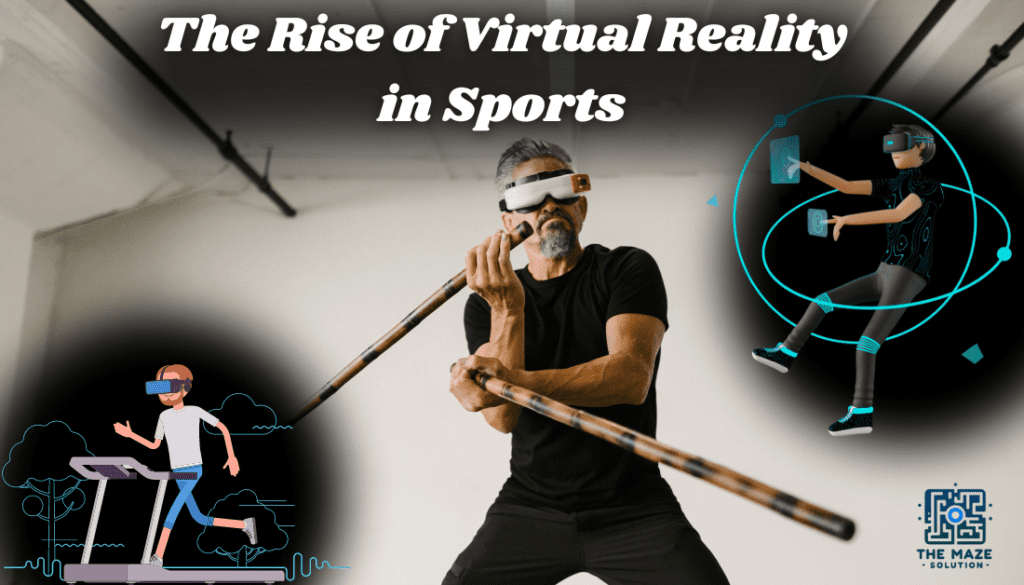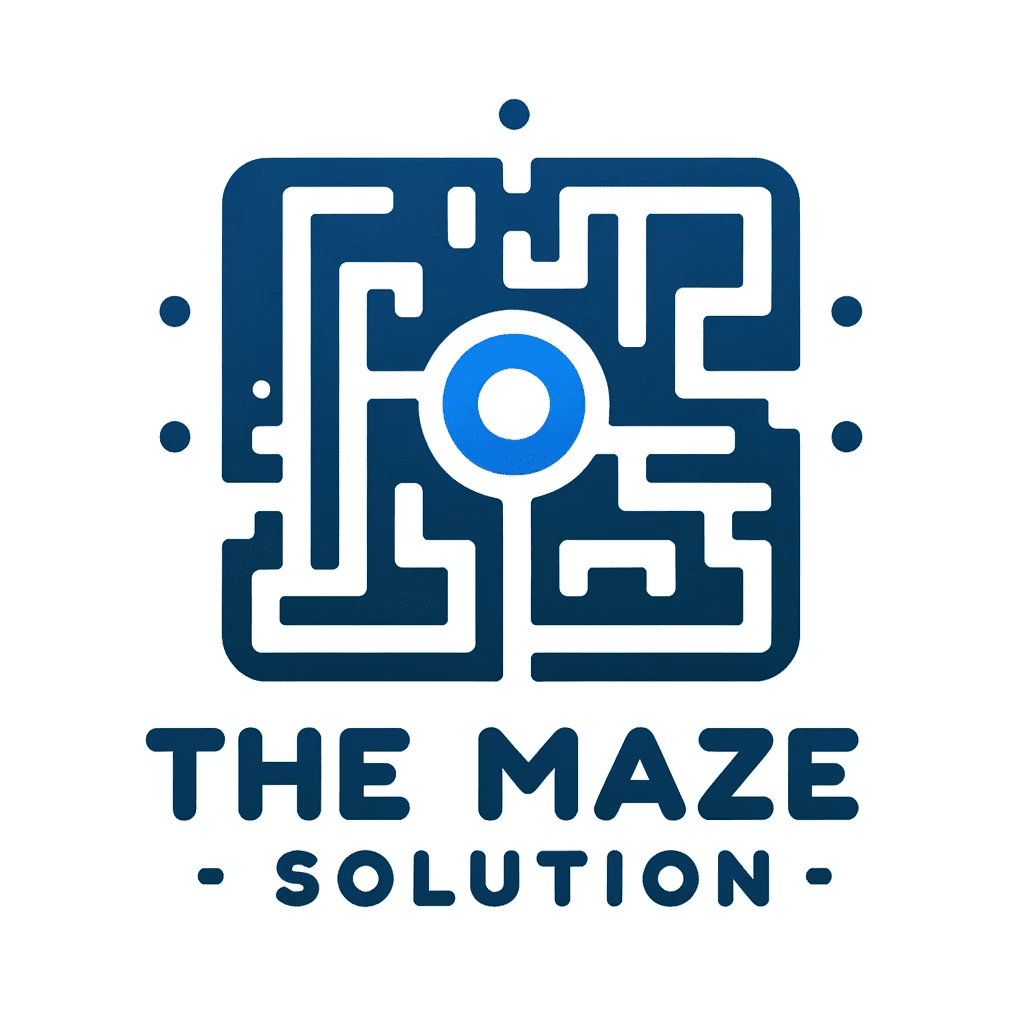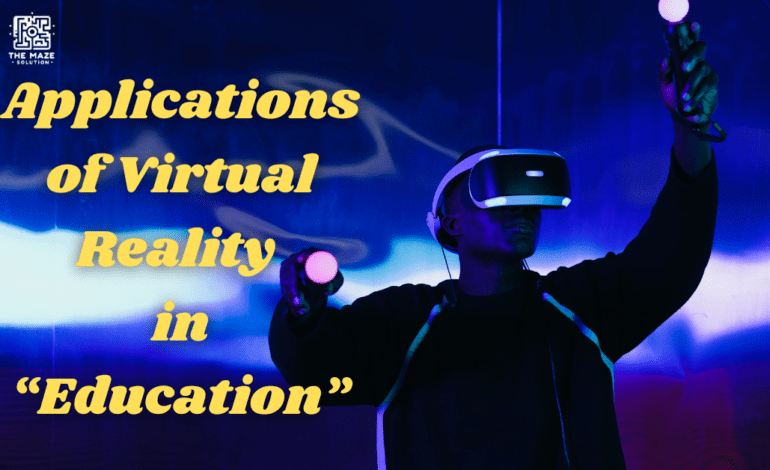Virtual Reality in Sports: Transforming Training and Performance

Virtual Reality (VR) is revolutionizing various industries, and sports is no exception. With its immersive and interactive capabilities, VR is transforming how athletes train, how games are played, and how fans engage with their favorite sports. In this blog, we’ll explore the significant impact of Virtual Reality in sports, particularly focusing on training and performance enhancement. We’ll examine the applications of Virtual Reality in sports and how VR in sports training is setting new standards for athletic excellence.
The Rise of Virtual Reality in Sports
The journey of VR in sports began with modest experiments and has now grown into a sophisticated tool used by top athletes and teams worldwide. Initially, the applications of Virtual Reality in sports were limited to basic simulations, but advancements in technology have expanded its capabilities dramatically. Today, VR is not only used for player training but also for strategic planning, injury rehabilitation, and even enhancing the fan experience.

Early adopters of VR in sports saw its potential to create realistic training environments that could mimic actual game conditions without the associated risks. This early success paved the way for broader acceptance and integration of VR technology in various sports disciplines.
Currently, the trend is moving towards more specialized and sport-specific VR applications. For instance, soccer players can practice penalty kicks in a virtual stadium filled with cheering fans, while basketball players can refine their free-throw techniques under simulated game pressure. This trend underscores the growing belief that VR is an invaluable tool for enhancing athletic performance.
The Rise of Virtual Reality in Sports
Virtual Reality (VR) technology has been on an incredible journey in the world of sports. Initially, VR’s applications in sports were quite basic. The first experiments with VR involved creating simple simulations to mimic game situations. These early efforts were modest but showed promise. Athletes could practice in a controlled, virtual environment, reducing the risk of injury while still honing their skills.
However, as technology advanced, so did the potential of VR in sports. Modern VR systems are incredibly sophisticated, offering realistic, immersive experiences that can closely replicate real-life conditions. Today, VR is a multifaceted tool in the sports industry, extending far beyond basic training simulations.
Early Adoption and Broader Acceptance
The initial adopters of VR in sports recognized its potential to revolutionize training. By creating realistic training environments, VR allowed athletes to practice under game-like conditions without the physical risks. This early success was crucial. It demonstrated the tangible benefits of VR, leading to broader acceptance and integration of this technology across various sports disciplines.
Coaches and athletes quickly realized that VR could offer more than just a safe training space. It could also be used for strategic planning. Teams began using VR to simulate opponent strategies and game scenarios, giving them a tactical edge. Injury rehabilitation also saw significant benefits. VR-based rehabilitation programs offered personalized recovery exercises in a controlled environment, speeding up recovery times and improving outcomes.
Specialized and Sport-Specific VR Applications
Today, the trend is towards creating highly specialized and sport-specific VR applications. These applications are designed to address the unique needs of different sports. For example, in soccer, players can practice penalty kicks in a virtual stadium filled with cheering fans. This not only helps improve their technique but also conditions them to handle the pressure of a real game. Similarly, basketball players can work on their free-throw techniques under simulated game pressure, helping them perform better during actual matches.
The specialization of VR applications underscores a growing belief in its value. Athletes and coaches see VR as an invaluable tool for enhancing performance. The ability to practice and refine skills in a realistic yet controlled environment is a game-changer. VR offers the perfect balance of safety and realism, allowing athletes to push their limits without the associated risks.
Moreover, VR is not just for training. It is also being used to enhance the fan experience. VR can create immersive viewing experiences, allowing fans to feel like they are part of the action. This innovative use of VR is transforming how fans engage with sports, making games more interactive and exciting.
VR in Sports Training: Enhancing Athletes’ Skills
One of the most significant impacts of VR in sports is its role in training. VR in sports training allows athletes to immerse themselves in realistic scenarios, providing a safe and controlled environment to practice and refine their skills. For example, quarterbacks in American football can use VR to practice their throws and decision-making without the physical wear and tear of a real game. This innovative approach to training ensures that athletes can hone their abilities efficiently and effectively.
The benefits of using VR for skill development are manifold. Firstly, it offers a risk-free environment where athletes can repeatedly practice complex maneuvers without the fear of injury. Secondly, VR can simulate various game situations, helping athletes develop quick decision-making skills and adapt to different scenarios. Lastly, VR provides instant feedback, allowing athletes to make real-time adjustments to their techniques.
Several successful VR training programs have emerged as case studies in the sports world. One notable example is the Stanford University football team, which uses VR to help quarterbacks practice reading defenses and making split-second decisions. The results have been promising, with players reporting improved on-field performance and increased confidence.
Virtual Reality in Sports: A Game Changer for Performance
Beyond training, Virtual Reality in sports has proven to be a game changer for performance enhancement. By simulating game situations and opponent strategies, athletes can prepare mentally and tactically for real-life competitions. VR allows for detailed analysis and replay of performance, giving athletes and coaches the insights needed to make critical improvements. Testimonials from athletes who have incorporated VR into their routines highlight its effectiveness in boosting confidence and performance on the field.
The ability to visualize and rehearse game scenarios in a virtual environment helps athletes build muscle memory and mental resilience. For example, a tennis player can practice returning serves from various opponents, each with different playing styles and strengths. This level of preparation can make a significant difference in competitive performance.
Athletes and coaches alike have praised VR for its role in improving tactical and strategic aspects of sports. By analyzing virtual simulations, teams can develop better game plans and strategies. For instance, soccer teams can use VR to study their opponents’ formations and devise counter-strategies. This level of preparation ensures that athletes are mentally and physically ready to face any challenge.
Applications of Virtual Reality in Sports
The applications of Virtual Reality in sports are diverse and continually expanding.
Training Simulations and Scenarios
Training simulations enable athletes to experience and react to various game scenarios. For instance, a baseball player can practice hitting against a virtual pitcher who throws different types of pitches at varying speeds. This type of training helps athletes improve their reaction times and develop a better understanding of the game.
Injury Rehabilitation and Prevention Using VR
VR is also instrumental in injury rehabilitation, offering customized exercises that aid in quicker recovery. Physical therapists can design VR-based rehabilitation programs that simulate real-life movements, helping injured athletes regain their strength and mobility. Additionally, VR can be used to identify and correct biomechanical issues, reducing the risk of future injuries.
Fan Engagement and Experience Enhancement
VR enhances fan engagement by providing immersive viewing experiences, making them feel closer to the action. Fans can use VR headsets to watch games from the perspective of their favorite players or experience the thrill of being in a packed stadium. This level of immersion enhances the overall fan experience and fosters a deeper connection with the sport.
Virtual Reality for Referee Training and Decision-Making
Referees use VR for training, which helps in making more accurate decisions during games. By simulating various game situations, referees can practice their decision-making skills and learn to handle high-pressure scenarios. This leads to better officiating and fewer controversial calls during actual games.
Challenges and Considerations
Despite its benefits, the integration of VR in sports faces several challenges.
Technical and Financial Challenges
The cost of VR equipment and the need for technical expertise can be significant barriers. High-quality VR systems are expensive, and not all sports organizations have the budget to invest in this technology. Additionally, setting up and maintaining VR systems requires specialized knowledge and skills, which can be a challenge for smaller teams.
Addressing Skepticism and Resistance
Some athletes and coaches may be resistant to adopting new technologies. Traditional sports training methods have been effective for years, and convincing stakeholders to switch to VR can be challenging. It is essential to provide education and demonstrate the tangible benefits of VR through case studies and real-world examples.
Future Prospects and Potential Developments
Looking ahead, the future of VR in sports is promising, with continuous advancements poised to overcome current limitations. Innovations in VR technology, such as improved graphics and more realistic simulations, will enhance the overall experience for athletes and fans. Additionally, as VR becomes more affordable and accessible, its adoption in sports is likely to increase.
Conclusion
Virtual Reality is undeniably transforming the landscape of sports. Its applications in training and performance enhancement are paving the way for a new era of athletic excellence. By providing realistic simulations, instant feedback, and a safe training environment, VR is helping athletes reach their full potential.
As technology continues to evolve, the role of VR in sports will only grow, offering even more innovative solutions for athletes, coaches, and fans alike. Embracing VR in sports training and performance is not just an option but a necessity for those aiming to stay ahead in the competitive world of sports.
Are you ready to take your training to the next level? Explore the possibilities of VR in sports and see how it can transform your performance. Join the movement and be part of the future of sports.





